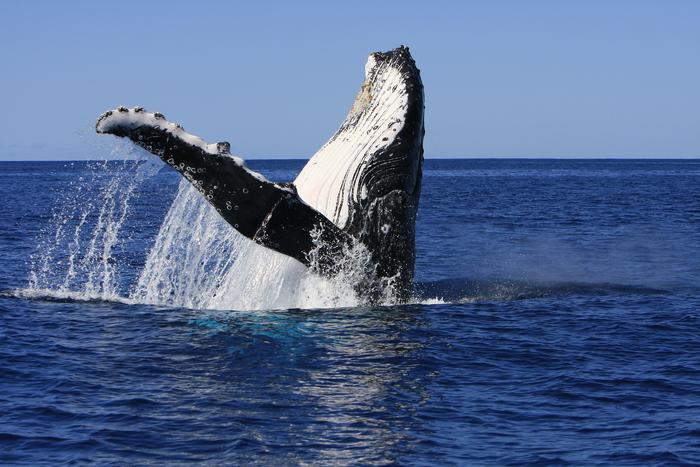Humpback whale songs have emerged as a focal point in the discourse surrounding animal communication, raising profound questions about the very nature of language and its evolutionary implications. Traditionally, language has been viewed as a distinctly human trait, encapsulated by grammatical structures and semantic meanings. However, recent research has unveiled striking similarities between the communicative patterns of humpback whales and the statistical structures inherent in human language. This discovery challenges the long-standing assumption that language is a unique feature of our species, suggesting that the capacity for complex communication may transcend evolutionary boundaries.
For decades, researchers have observed the intricate and melodious songs produced by humpback whales in their natural habitats. These songs are not mere sounds; rather, they are expressions of culture, passed down through generations. While scientists have long recognized the social learning aspects of whale songs, the linguistic structure underpinning these vocalizations remained largely unexplored—until now. The recent study, spearheaded by a collaborative team from multiple universities, presents compelling evidence that humpback whale songs adhere to statistical methods akin to those used by babies when learning their first words.
At the heart of this groundbreaking research is an innovative approach that employs techniques derived from infant language acquisition to analyze eight years of data on humpback whale songs collected in New Caledonia. The researchers identified patterns in whale vocalizations that mirror the statistical structures found in human language. Specifically, they detected recurring segments within the whale songs that resonate with the concept of phonemes and morphemes in human speech. Such findings suggest a sophisticated level of understanding and learning in these cetaceans that was previously unrecognized.
While the results are undeniably intriguing, it is crucial to distinguish between whale song and human language. As articulated by Dr. Ellen Garland from the University of St Andrews, whale songs do not possess semantic meaning in the same way human language does. Rather, they appear to share a statistical relationship more closely aligned with human music, which also exhibits similar structural properties but lacks the expressive nuance of language. This raises vital questions about the cognitive processes underlying whale communication and whether these units of sound hold significance for the whales themselves.
The implications of this research extend beyond mere curiosity regarding animal behavior. The study provides a fascinating lens through which we can observe the mechanisms of learning and cultural transmission in non-human species. Just as children utilize contextual clues and transitional probabilities to grasp linguistic constructs, humpback whales may engage in comparable strategies to master their songs. This revelation points to a common cognitive framework that transcends species, inviting us to consider the broader evolutionary context of communication.
Further exploration of humpback whale communication challenges researchers to rethink their approaches to studying non-human languages. Traditionally, the focus has rested heavily on primates, our closest evolutionary relatives. However, these findings suggest an equally valuable perspective: examining instances of convergent evolution in other animals can enrich our understanding of the fundamental principles governing communication. Language may not be as exclusive to humans as once believed; rather, its essence may be embedded across various species.
Moreover, the acknowledgment of shared linguistic characteristics between whales and humans compels us to reconsider the dynamics of culture in the animal kingdom. Cultural transmission—an essential component in the development of complex behavior—plays a significant role in shaping how species, including humans and whales, communicate. This overlap underscores the need to appreciate the rich tapestry of animal cultures and their potential parallels with human societies.
As researchers continue to delve into the mystery of whale songs, they face the challenge of discerning the cognitive significance of these newly identified linguistic structures. Do humpback whales, like infants acquiring language, utilize these patterns to navigate their social landscapes? Or are they engaged in a form of communication that is fundamentally different yet equally sophisticated? The answers to these questions remain elusive, yet they beckon further investigation into the depths of marine communication.
The findings published in the prestigious journal Science serve as a catalyst for an ongoing dialogue surrounding language, communication, and the cognitive capacities of animals. As society becomes increasingly aware of the complexities of animal behavior, the research surrounding humpback whale song may ignite a renewed appreciation for the subtle nuances present within non-human forms of communication. It reminds us that the study of language is not limited to the confines of human interaction but can expand into the realms of nature.
In conclusion, the revelations surrounding humpback whale songs challenge prevailing notions of linguistic uniqueness and propose a rich, interconnected lineage of communication that may stretch far beyond our preconceived boundaries. As science continues to unravel the intricacies of animal behavior, we are reminded of the shared threads that bind the tapestry of life’s diversity—an invitation to foster greater compassion and understanding for the creatures with whom we share our world.
Subject of Research: Animals
Article Title: Whale song shows language-like statistical structure
News Publication Date: 7-Feb-2025
Web References:
References:
Image Credits: Credit – OperationCetaces
Keywords: Whales, Animal Communication, Evolutionary Biology, Cultural Transmission, Complex Behavior, Linguistics, Cetaceans, Marine Biology, Humpback Whales, Language Structure, Statistical Properties.




